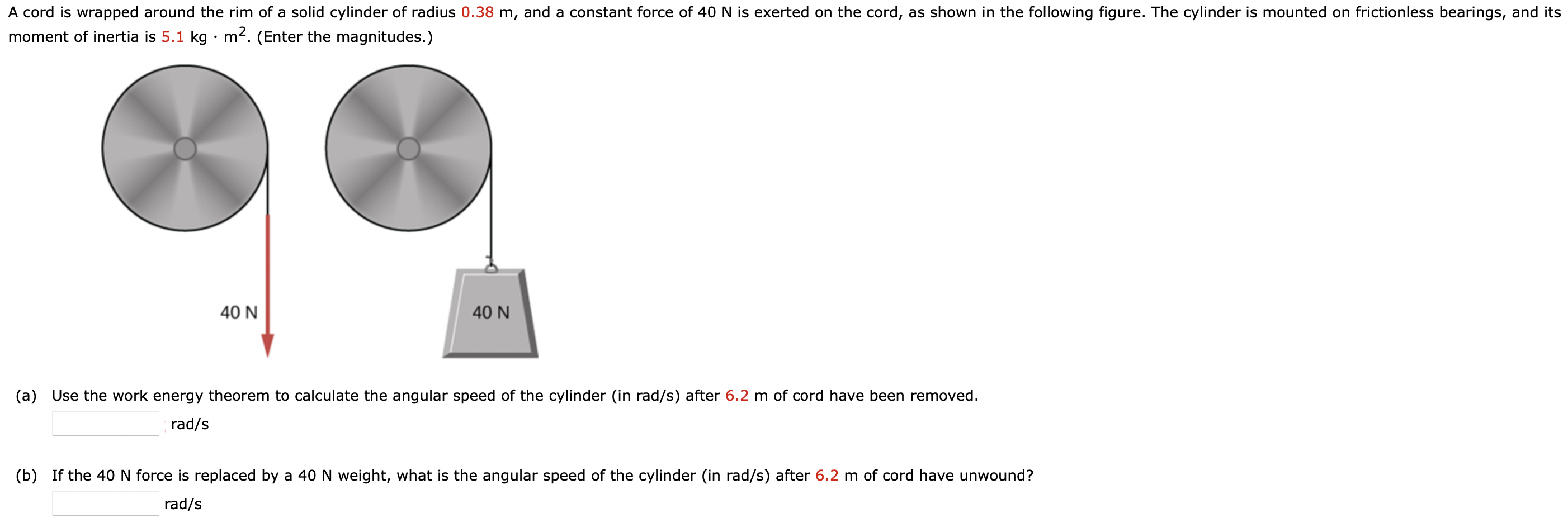A cord is wrapped around the rim of a solid cylinder of radius 0.38 m, and a constant force of 40 N is exerted on the cord, as shown in the following figure. The cylinder is mounted on frictionless bearings, and its moment of inertia is 5.1 kg⋅m2. (Enter the magnitudes. ) (a) Use the work energy theorem to calculate the angular speed of the cylinder (in rad/s) after 6.2 m of cord have been removed. rad/s (b) If the 40 N force is replaced by a 40 N weight, what is the angular speed of the cylinder (in rad/s) after 6.2 m of cord have unwound? rad/s
